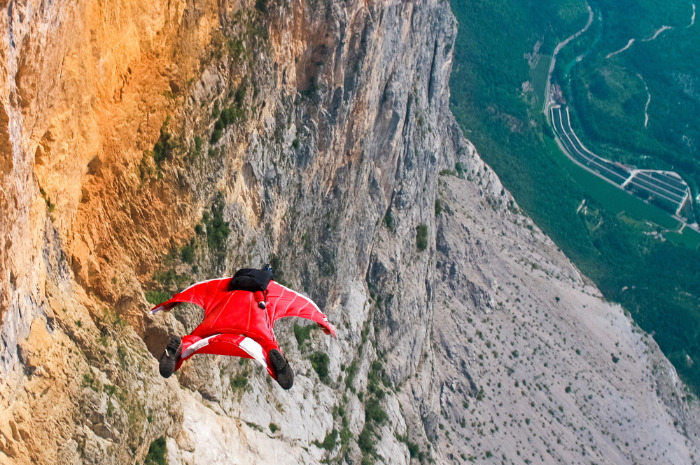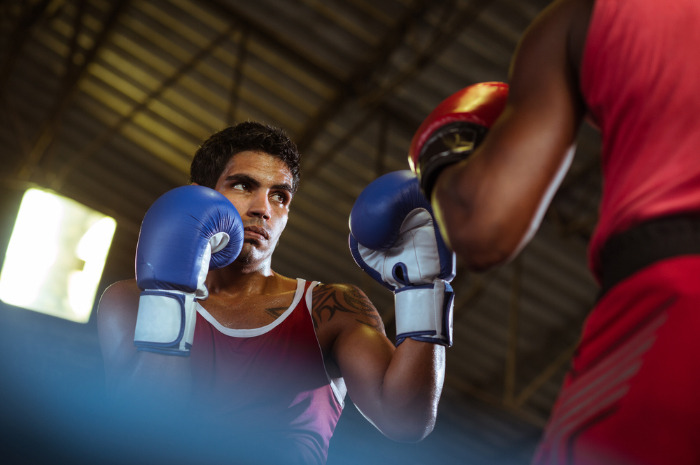The World's Riskiest Sports
Do you consider yourself an adrenaline junkie? You don't have to travel far to experience a feeling of euphoria. You can try certain sports in your own backyard. But they don't come free of risks. The following list is based on research by SBO.net. It looked into some of the craziest, most death-defying sports in the world, from base-jumping off buildings to facing down the horns of a bull. Each has the number of deaths, locations it's done, and important facts – as well as a risk factor.
Big Wave Surfing
This extreme water sport involves riding breaking waves to shore on a board. Surfing is usually done in the ocean, but technology has made it possible to create waves in pools and rivers. Some giant waves are up to 100 feet high. The injury risk percentage is 55. If there is a wipeout, surfers can be pushed 50 feet below the surface in seconds.
High Altitude Mountaineering
This kind of climbing involves mountaineering at extreme altitudes. The risks can cause serious consequences – low oxygen as well as extreme and quickly changing weather. The area above 26,000 feet is known as the "Death Zone." The death rate of trying to climb Mount Everest is 1/20. Injury risk percentage is 90.
Horse Riding
This is a recreational hobby for many people; few think of it as a sport. But it can be very competitive, and dangerous. Risks differ depending on riding style, with racing being the most dangerous – one injury for every five hours of riding. More than 100 deaths occur per year.
BASE Jumping
BASE is an acronym that stands for Building, Antenna, Span, and Earth. These are the four kinds of fixed objects that can be used as starting platforms. With BASE jumping, you don't usually have more than 15 seconds to open up your parachute. The extreme sport is illegal in many places. Too high, too low, and rugged terrains make it challenging for rescuers to reach people if necessary. One in every 750 jumps is fatal.
Cycling
People have been riding bicycles on regular basis since the 1800's. Cycling is now known to be one of the best ways to maintain weight and boost a person's overall health because it's an intense cardio exercise that works out the entire body at once. But it can be very dangerous. Most injuries occur as a result of riding at high speed. People often race at very high speeds with little protection or in hazardous environments.
Off Piste Skiing
Skiing on unmarked terrain on mountains gives people access to fresh powder but it comes with a lot of risks. Avalanches are the main concern when skiers decide to go off the grid for a more thrilling experience. Exhaustion, rock falls, trees, and cliffs also pose a big threat. More than 100 deaths are reported every year, and the injury risk percentage in 90.
Skydiving
Can you willingly hurl your body out of a plane that's flying 14,000 feet in the air? Once you manage that out the door maneuver and actually begin your free fall, skydiving is one of the craziest adventures you can do. The usual risks are non-deployment of parachute, mid-air collisions, landing injuries, drowning, and even electrocution.
Rugby
You may have heard of rugby as being the "tougher" and "faster-paced" version of American football. This is a very high impact sport that revolves around tacking players head on without much protection – 110 athletes in the U.K. have been paralyzed playing rugby. It is huge in the U.K., Australia, South Africa, Italy, France, and New Zealand.
Bullfighting
In some forms of bullfighting, matadors try to kill the bull by getting as close as possible. However, this increases the risk of injury or death. In 2013, 47 injuries occurred across Spain alone. The sport is also popular in Portugal and Latin America. The injury risk percentage is 70.
Boxing
On average, 10 boxers die a year from head injuries. There have been 339 deaths between 1950 and 2007. Even with protective gloves, the risk of a serious head injury or brain trauma is high due to the speed and intensity of the hitting. After all, this is a combat sport.
Soccer
This is another high intensity contact sport, though not as high impact. Impact injuries are not uncommon and can be serious. About 13 percent of injuries involve concussions. There have been 198 deaths on the field since 1889. The injury risk percentage is 30.
Formula One
This is the fastest form of motor racing. At speeds over 200 mph and up to 25 cars on a (sometimes tiny) track at the same time, collisions and accidents are a real possibility. When they happen, they often result in debilitating injuries and can be deadly. There is a 1 in 100 chance of dying; 51 deaths have recorded since 1952.
Squash
Squash may not look like a very dangerous sport but 11 people die, on average, a year playing it. The players need to be incredibly fit and the game places huge stress on the heart, with heart rates often reaching 150 to 170 beats per minute.
Cheerleading
This refers to cheerleading in college, not at professional games. It involves dance, acrobatics and stunts. Many of the lifts are very dangerous and often result in serious injury or worse. One slip can cost a person's ability to move ever again. Half of the catastrophic head, spine and neck injuries in the U.S. occur among cheerleaders.
American Football
This is such a popular sport that it's very hard to imagine it can be very dangerous. In recent years high-profile injuries have gotten a lot of media attention and the new safety precautions have been implemented. Still, hard tackles and plays are what the fans want to see.















